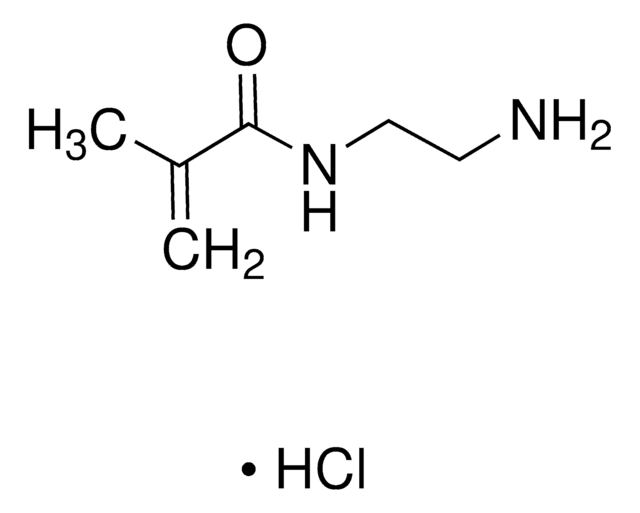907081
Methacrylamide poly(ethylene glycol) amine hydrochloride
average Mn 400, cross-linking reagent polymerization reactions
Synonym(s):
Methacrylamide poly(ethylene glycol) amine, PEG amine monomethacrylamide, PEG diamine mono methacrylamide, PEG methacrylamide, PEG monomethacrylamide, Polyethylene glycol
About This Item
Recommended Products
product name
Methacrylamide poly(ethylene glycol) amine hydrochloride, average Mn 400
form
liquid
mol wt
average Mn 400 (by NMR)
average Mn 400
reaction suitability
reagent type: cross-linking reagent
reaction type: Polymerization Reactions
color
pale yellow
polymer architecture
shape: linear
functionality: heterobifunctional
storage temp.
2-8°C
Related Categories
Application
Storage Class Code
10 - Combustible liquids
WGK
WGK 3
Flash Point(F)
>230.0 °F
Flash Point(C)
> 110 °C
Certificates of Analysis (COA)
Search for Certificates of Analysis (COA) by entering the products Lot/Batch Number. Lot and Batch Numbers can be found on a product’s label following the words ‘Lot’ or ‘Batch’.
Already Own This Product?
Find documentation for the products that you have recently purchased in the Document Library.
Our team of scientists has experience in all areas of research including Life Science, Material Science, Chemical Synthesis, Chromatography, Analytical and many others.
Contact Technical Service

![N-[3-(Dimethylamino)propyl]methacrylamide 99%, contains MEHQ as inhibitor](/deepweb/assets/sigmaaldrich/product/structures/295/145/6b4aae15-7cb5-4b7b-9c06-8e6d24e50951/640/6b4aae15-7cb5-4b7b-9c06-8e6d24e50951.png)


![[2-(Methacryloyloxy)ethyl]trimethylammonium chloride solution 75 wt. % in H2O](/deepweb/assets/sigmaaldrich/product/structures/316/612/66b0f4cf-d060-427d-b4f5-e8fab3e5cffe/640/66b0f4cf-d060-427d-b4f5-e8fab3e5cffe.png)



